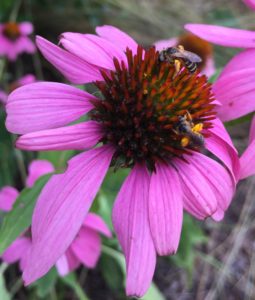Pest Alert – Protect Your Plants While Protecting Beneficial Insects
go.ncsu.edu/readext?686520
en Español / em Português
El inglés es el idioma de control de esta página. En la medida en que haya algún conflicto entre la traducción al inglés y la traducción, el inglés prevalece.
Al hacer clic en el enlace de traducción se activa un servicio de traducción gratuito para convertir la página al español. Al igual que con cualquier traducción por Internet, la conversión no es sensible al contexto y puede que no traduzca el texto en su significado original. NC State Extension no garantiza la exactitud del texto traducido. Por favor, tenga en cuenta que algunas aplicaciones y/o servicios pueden no funcionar como se espera cuando se traducen.
Português
Inglês é o idioma de controle desta página. Na medida que haja algum conflito entre o texto original em Inglês e a tradução, o Inglês prevalece.
Ao clicar no link de tradução, um serviço gratuito de tradução será ativado para converter a página para o Português. Como em qualquer tradução pela internet, a conversão não é sensivel ao contexto e pode não ocorrer a tradução para o significado orginal. O serviço de Extensão da Carolina do Norte (NC State Extension) não garante a exatidão do texto traduzido. Por favor, observe que algumas funções ou serviços podem não funcionar como esperado após a tradução.
English
English is the controlling language of this page. To the extent there is any conflict between the English text and the translation, English controls.
Clicking on the translation link activates a free translation service to convert the page to Spanish. As with any Internet translation, the conversion is not context-sensitive and may not translate the text to its original meaning. NC State Extension does not guarantee the accuracy of the translated text. Please note that some applications and/or services may not function as expected when translated.
Collapse ▲The winter of 2019 was mild. Insects may benefit from this fact. 2020 could be interesting in our gardens.
Thankfully most insects (97%) are either beneficial or benign as far as humans are concerned. Some of those 3% of harmful insects can be troublesome to gardeners. So for the most part, we need spend little energy thinking about insects other than enjoying those flying flowers the butterflies.
Every once and while however, we do find an insect eating up our garden plants. In this case, we should act. But before we pull out the pesticides, let’s try some safer alternatives first. Then let’s use biorational insecticides. These products are derived from materials that are less harmful to the environment.
Non-Pesticide Insect Controls
- Physical removal – remove insects by hand; drop into soapy water.
- Wash away with a strong stream of water – most insects cannot return to plants after they have been flushed using a strong stream of water.
- Biological pesticides – BT, milky spore, Spinosad, Neem, and others are insect controls based on natural substances. This means they are safer for the environment.
- Insecticidal soaps – Safer Soap and other brands of insecticidal soaps are soapy mixtures designed to irritate.
- Oils – Horticultural oil, essential oils are thin oils that smother insects.
- Beneficial insects – provide shelter, food, and water; reduce and limit insecticide use.
Pesticide Tips

Please protect pollinating and beneficial insects by limiting pesticide use, choosing biological pesticides, and targeting sprays avoiding beneficial insects.
-ALWAYS read the label and follow instructions exactly
-Never don’t buy too much
-Always target specific problem
-Always use sparingly
-Please remember to protect beneficial insects





